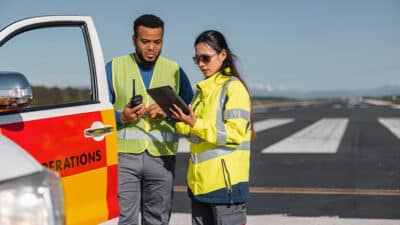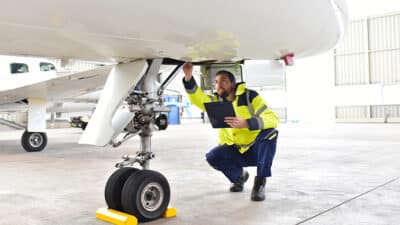Safety Systems (SMS) - SM4 Safety Articles & Resources

Sleep Duration Is a Key Factor in Predicting On-Duty Alertness
After a poor night of sleep, it is common to feel tired, sluggish and even irritable. More important for air operators, poor sleep is also associated with increased fatigue—which can directly impact employee performance and put lives at risk.

Aviation Emergency Response Training Explained
Emergency Response Plans (ERPs), however, are much more infrequently used in most organizations. When an abnormal situation disrupts your operation, is your team versed in their roles? Are they prepared to handle the emergency? Do they know what their responsibilities are?

Airport Risk Profile – The Vehicle Service Road
As air transport continues its recovery, airport operations—particularly passenger traffic—are steadily increasing to all-time highs. As this is occurring, airport ground operations are dealing with fixed gates and infrastructure challenges to service the increased volume. Workforce challenges, employee retention, system outages and weather impacts have challenged many airports and their handling agents to keep up. Airports and service providers must work together to manage the emerging risks.

Three-Word Magic
There are many well-known three-word mantras that serve as “human performance shorthand” and can help us handle stressful situations more effectively. One new one we could all probably benefit from in our personal lives is “Relax – Reassess – Re-engage.” When the stuff hits the fan, it gives us somewhere to go mentally, and using it regularly improves the life-saving skill known as mental agility.

Maximizing Your SMS: Differences Between Audits, Evaluations and Investigations
Audits, evaluations and investigations are distinctively different and powerful tools for supporting decision-making within an organization’s safety management system (SMS). Understanding the differences of the SMS “big three” can help us utilize each tool at the right time with minimal resources and result in the quality decision-making required within the SMS risk management framework.

Understanding the Effect of Increased Aviation Demand and Fatigue on Pilots
The COVID-19 pandemic has taken its toll on the aviation industry, with travel restrictions and flight cancellations severely impacting air travel over the past three years. Business aviation was one of the most impacted air travel sectors, as organizations opted for virtual meetings or found other ways to engage remotely with their clients and colleagues.

What Would Marcus Aurelius Do?
In a recent discussion with an experienced pilot about this, he immediately gave his biggest concern. “It’s not just about pilots or air traffic controllers, everybody is new,” he said. From maintenance personnel to ground support, thousands of new entries into our industry are learning as they go and making simple mistakes along the way. It has always been this way with inexperienced people, but now we have a lot more of them.

Management of Change (MoC): A Collaborative Approach To Raising Awareness Amidst a Constant State of Change
Identifying and managing hazards affecting an operation’s integrity is a fundamental objective of all flight departments or organizations working within a risk-based environment. In aviation, more and more operators are coming to the conclusion, and rightly so, that mere regulatory compliance is not an assurance of operational integrity and safety.

Strategies for Reducing a Concerning Trend in Runway Excursions
Over a four-year period ending in 2010, there were 20 runway excursions at Jackson Hole, WY (KJAC). As a result of this uptick in excursions, the Federal Aviation Administration (FAA) published Safety Alert for Operators (SAFO) 11011. A combination of the heightened awareness created by the SAFO and the Jackson Hole airport and operators adopting many of the recommendations successfully has mitigated excursions over the last 12 years.
